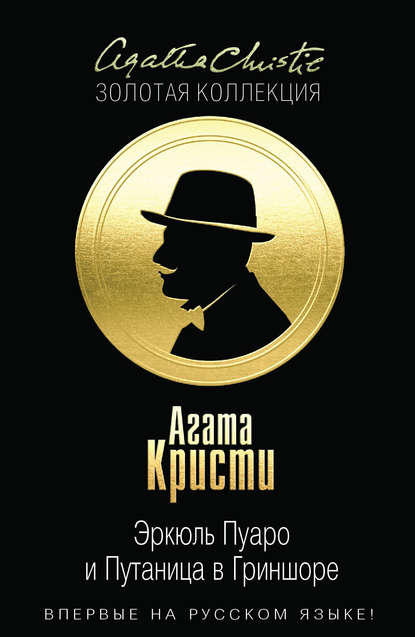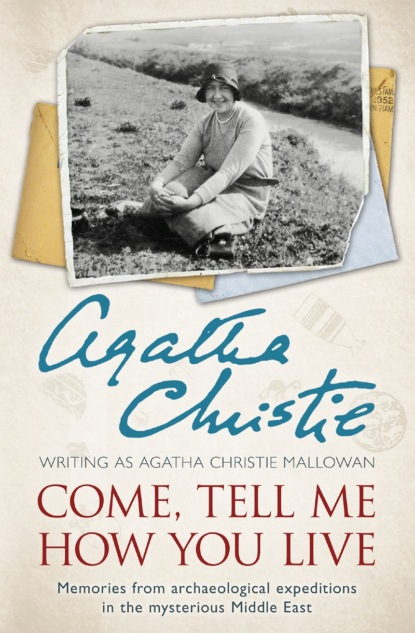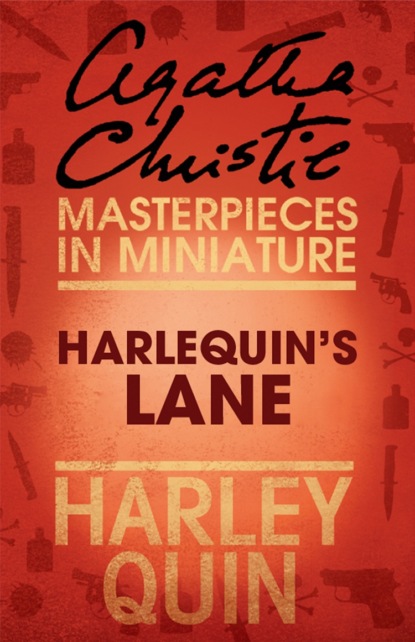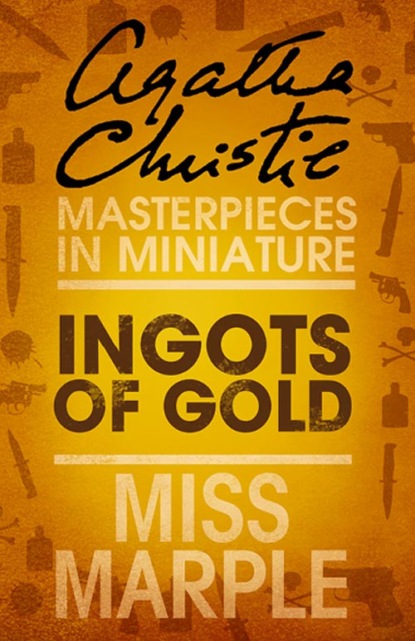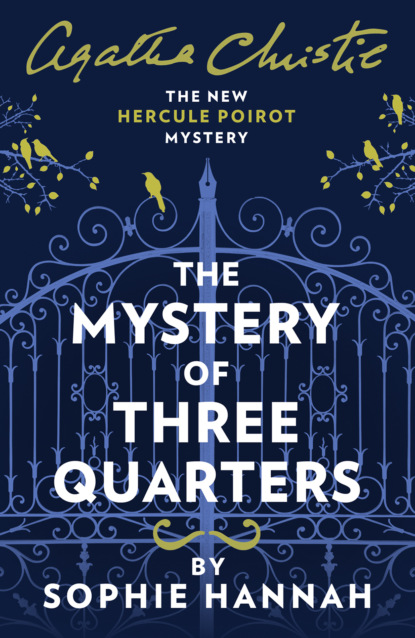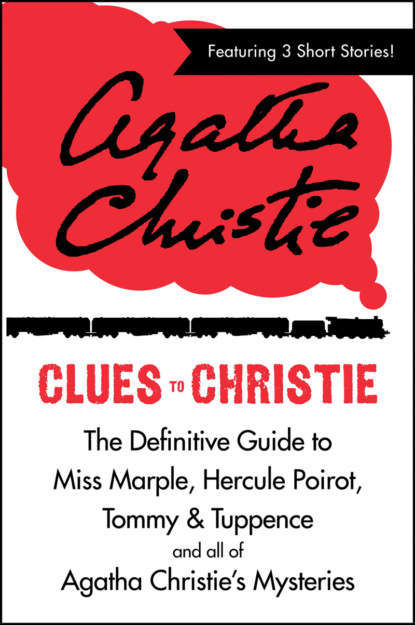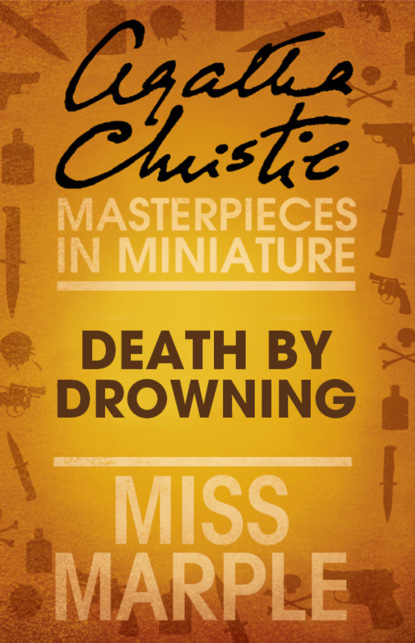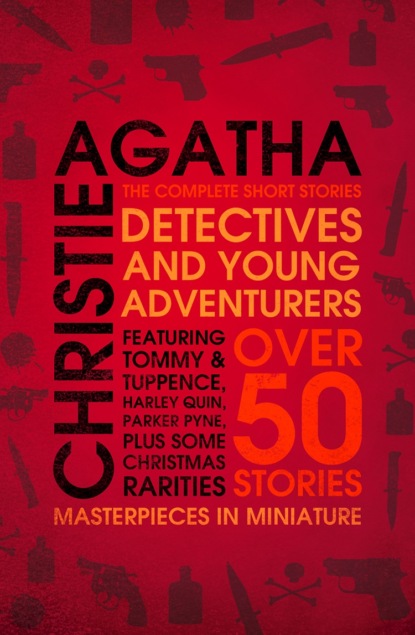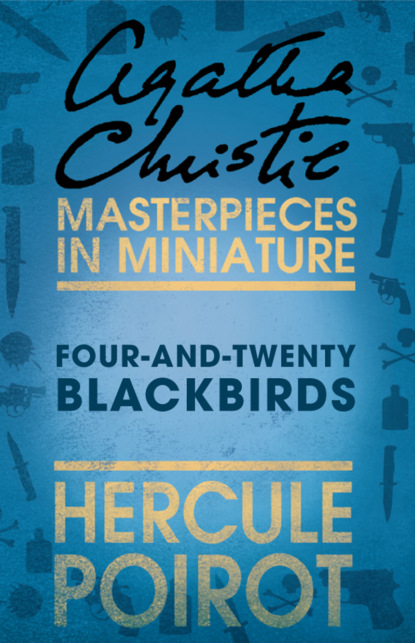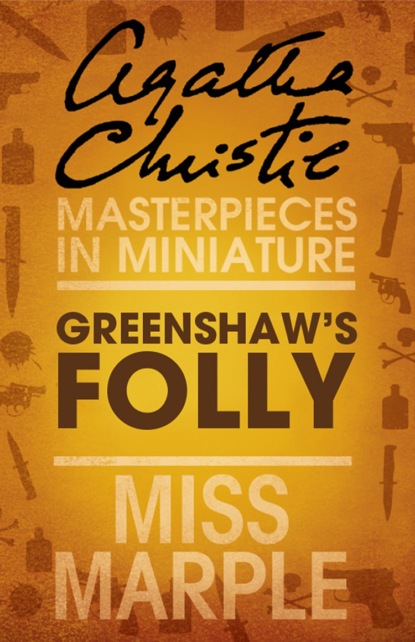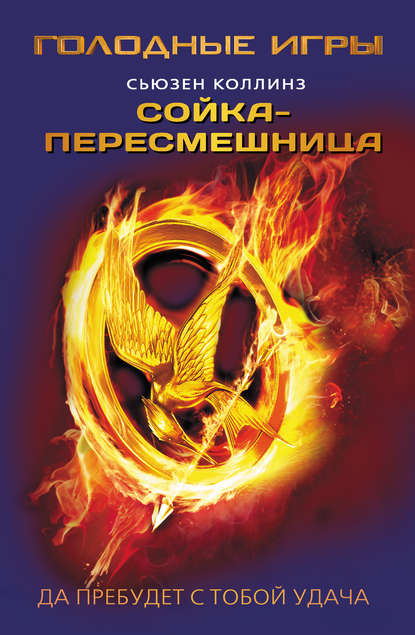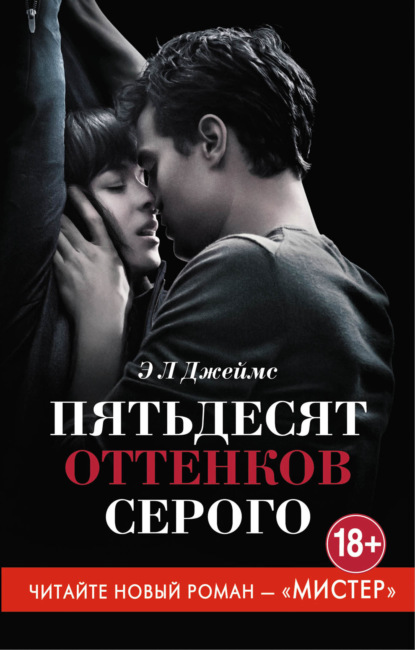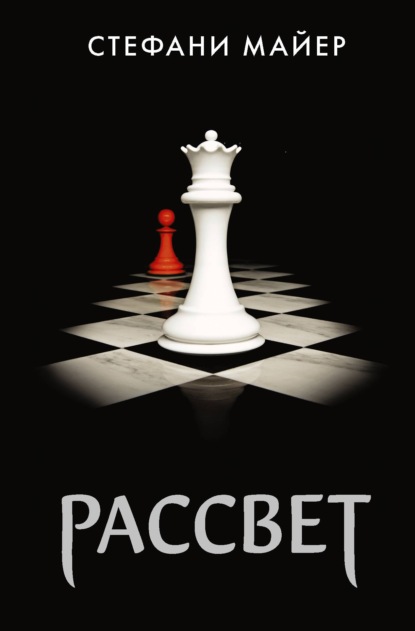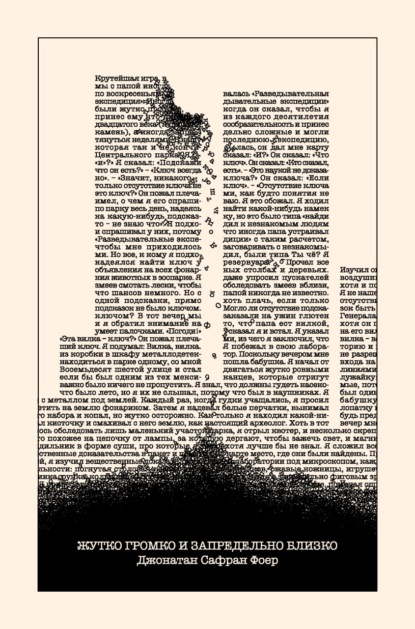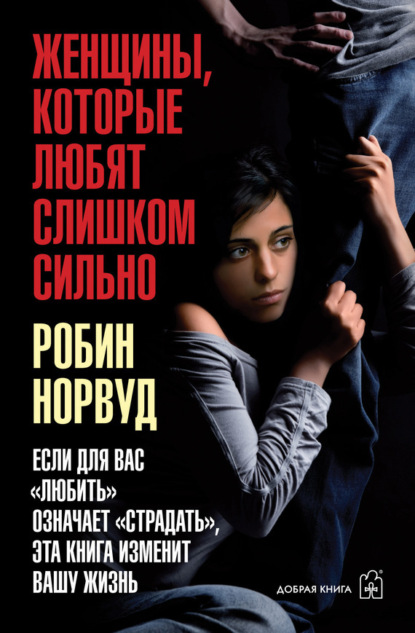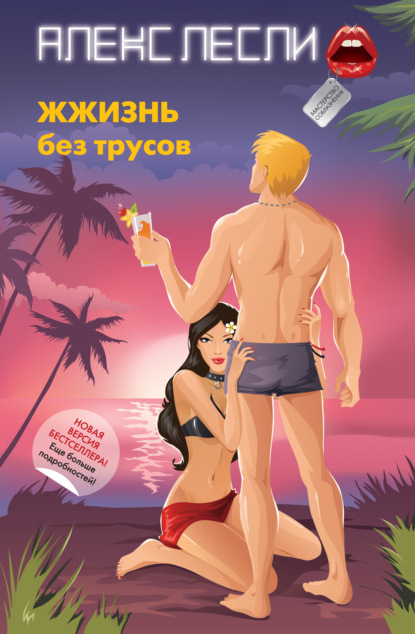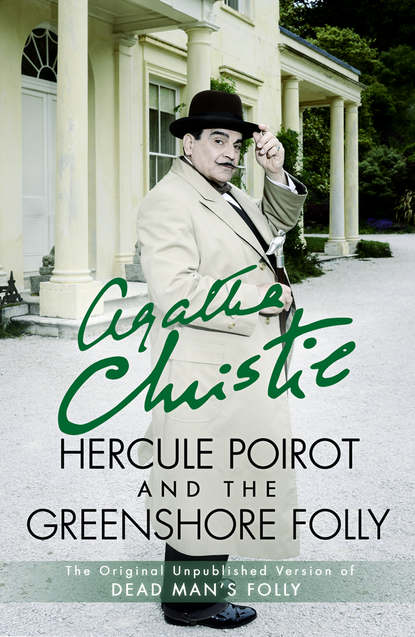
Текст
отзывы: 0 | рейтинг: 0
Hercule Poirot and the Greenshore Folly
Язык:
Английский
Тип:
Текст
Год издания:
2019
Полная версия
Полная версия
Hercule Poirot and the Greenshore Folly
Agatha Christie
As a favour to an old friend, Hercule Poirot finds himself at a summer fete in Devon, taking part not in a Treasure Hunt, but a Murder Hunt, in this never-before-published novella version of Dead Man’s Folly. Now released for the first time as an eBook exclusive publication.Sir George and Lady Stubbs, the hosts of a village fête, hit upon the novel idea of staging a mock murder mystery. In good faith, Ariadne Oliver, the well known crime writer, agrees to organise their murder hunt. But at the last minute Ariadne calls her friend Hercule Poirot for his expert assistance. Instinctively, she senses that something sinister is about to happen…In 1954, Agatha Christie wrote this novella with the intention of donating the proceeds to a fund set up to buy stained glass windows for her local church at Churston Ferrers, and she filled the story with references to local places, including her own home of Greenway. But having completed it, she decided instead to expand the story into a full-length novel, Dead Man’s Folly, which was published two years later, and donated a Miss Marple story (Greenshaw’s Folly) to the church fund instead.Unseen for sixty years, Hercule Poirot and the Greenshore Folly is finally published in this eBook exclusive edition.
AGATHA CHRISTIE
Hercule Poirot
and
the Greenshore Folly
Copyright (#u08c05560-e0eb-552a-b027-6b93bda57dc4)
Published by HarperCollinsPublishers Ltd
1 London Bridge Street
London SE1 9GF
www.harpercollins.co.uk (http://www.harpercollins.co.uk)
First published in Great Britain by HarperCollinsPublishers Ltd 2014
Hercule Poirot and the Greenshore Folly © Mathew Prichard 2013
Foreword from Agatha Christie’s Secret Notebooks © John Curran 2009
AGATHA CHRISTIE® and POIROT® are registered trade marks of Agatha Christie Limited in the UK and/or elsewhere. All rights reserved.
www.agathachristie.com (http://www.agathachristie.com)
Agatha Christie asserts the moral right to be identified as the author of this work.
A catalogue copy of this book is available from the British Library.
This novel is entirely a work of fiction. The names, characters and incidents portrayed in it are the work of the author’s imagination. Any resemblance to actual persons, living or dead, events or localities is entirely coincidental.
All rights reserved under International and Pan-American Copyright Conventions. By payment of the required fees, you have been granted the non-exclusive, non-transferable right to access and read the text of this e-book on screen. No part of this text may be reproduced, transmitted, down-loaded, decompiled, reverse engineered, or stored in or introduced into any information storage and retrieval system, in any form or by any means, whether electronic or mechanical, now known or hereinafter invented, without the express written permission of HarperCollins.
Source ISBN: 9780007546398
Ebook Edition © 2014 ISBN: 9780007546404
Version: 2017-04-11
CONTENTS
Cover (#uf5bb9060-1594-5861-912f-c9a49d9164f1)
Title Page (#ua51e9d55-13af-5d01-8c37-21e2fc01f594)
Copyright
Introduction by Tom Adams
Preface by Mathew Prichard
Foreword
Chapter One
Chapter Two
Chapter Three
Chapter Four
Chapter Five
Chapter Six
Chapter Seven
Chapter Eight
Chapter Nine
Chapter Ten
‘Agatha Christie and The Greenshore Folly’ by John Curran
About the Author
Also by Agatha Christie
About the Publisher
Introductionby Tom Adams (#u08c05560-e0eb-552a-b027-6b93bda57dc4)
MORE THAN half a century ago – 1962 to be precise – my impressively-named and enthusiastic agent, Virgil Pomfret, took me to meet the art director of Fontana Paperbacks, Patsy Cohen. On her desk was a copy of The Collector, John Fowles’ first published novel. It had been commissioned by Tony Colwell, art director at Jonathan Cape, and was my first serious attempt at trompe l’oeil painting for jacket art. It was a good time to be producing art for book covers. Good art was notably lacking in this field, particularly for paperbacks. In fact, the general standard was pretty dire, and the time was ripe for raising the bar. Up to then I had enjoyed doing serious paintings for hardback jackets, which included John Fowles’ The Magus, Patrick White’s Vivisector and David Storey’s Saville. Paperback covers were more often than not the poor second class products of publishers’ lists (with exceptions such as the original typographical Penguin covers), but virtually no serious attempt had been made to commission good art for paperbacks. However with the enthusiastic encouragement of Mark Collins, Virgil Pomfret and Patsy Cohen, I think we succeeded in doing just that.
From 1962 onwards, my relationship with Agatha Christie developed and prospered as I produced more than a hundred cover paintings for her books over twenty-five years. To begin with I simply enjoyed doing a good job. There were inevitably some failures and I know that I didn’t always please Agatha or her family. I am frequently asked if I met Agatha. I’m afraid the answer is no. Arrangements were made for various meetings; I did meet Rosalind Hicks, her daughter, Edmund Cork, her agent, and other members of her entourage, but Agatha’s legendary reticence and occasional illness prevented her from accepting invitations for us to meet. In retrospect I think it was just as well; it might have been embarrassing for both of us to discuss the likes and dislikes of various cover images. Nevertheless, for me it is a niggling regret. More recently, since my exhibition of Agatha Christie cover paintings at Torquay Museum in 2012, I have on several occasions met Mathew Prichard, a devoted and eloquent advocate of his grandmother’s achievements. Mathew and his wife Lucy have been a tower of strength and gratifyingly appreciative of my work. They helped and encouraged me in my recent endeavours on Agatha’s behalf, in particular while working on the cover painting for Hercule Poirot and the Greenshore Folly, and they arranged with the National Trust to make Greenway House and garden available for my research. Once, after a delightful lunch with Mathew and Lucy at Ferry Cottage, and with my wife, the children’s writer Georgie Adams, we were taken on a memorable boat trip on the River Dart.
I was delighted when David Brawn, Publisher of Agatha Christie at HarperCollins, asked me to do this special cover painting for a so-far unpublished story. It is a shorter version of the excellent Dead Man’s Folly and a great excuse for me to revisit Greenway. Agatha’s second husband Max Mallowan described Greenway as ‘this little paradise’, and it was for Agatha ‘the loveliest place in the world’. And it is. The handsome, foursquare, no-nonsense Georgian house is in many ways an embodiment of its famous literary owner. But it is the garden that is the true paradise. In my painting I have tried, within the constrictions of being true to the story, to embody its extraordinary beauty and magic. It is without doubt one of the iconic places of the West Country – that West Country with its rain-soaked and occasionally sun-soaked landscape, haunted moors and secret bosky woodlands, fringed by sea and rocky shores.
Greenway has a flamboyant garden, almost tropical in places and bordered by the Dart, and is now owned by the National Trust. For Agatha it provided a safe retreat from an often intrusive outside world, a world she was fascinated by and acutely observed, but into which she had no wish to be integrated.
This great detective story writer, this skilled puzzle and plot maker, was the inspiration for my work on her books. My painting for this story is a tribute to her house and garden but, nevertheless, it had to fulfil its function as an illustration. I know that Agatha instinctively disliked visual depictions of actual incidents, scenes and human figures, and in particular insisted that Hercule Poirot and Miss Marple must not be shown on the covers. Though Collins tended to adhere to these rules, her American publishers demanded more literal imagery, as demonstrated by the US version of Dead Man’s Folly, reproduced on the endpapers of this book. I have largely obeyed this sensible injunction but it is right to break rules sometimes as I have for the cover of The Greenshore Folly, in which there is some pure illustration, for instance: the house, the boathouse, the ferry bell and Battery; the magnolia (one of Agatha’s favourite flowers), the face of Lady Stubbs, the fallen oak and folly; even a slightly fantasised portrait of Agatha herself in a cherished garden nook. And there is a suggestion of a convivial crowd on the front lawn. All this is woven into what I hope is a pictorial tribute to Greenway.
Readers may note that I thatched the boathouse, as described in the story. Today it has a slate roof, but Mathew Prichard remembers it was originally thatched. So I have unwittingly restored the building to its former glory!
I make no claims to be a great artist in the same league as Francis Bacon, Lucian Freud or Graham Sutherland. Nevertheless I consider myself to be a good painter and illustrator and worthy I hope of a place somewhere in the middle of the pantheon of British 20th/21st-century art. Incidentally Graham Sutherland became a friend and mentor in the mid-fifties when I was a close neighbour in the Kentish village of Trottiscliffe. My visits to his White House studio and his to my Oast House studio were highlights of my early life as an artist. That I have been lucky enough to have survived into the 21st century and still working in my eighties is largely due to the care and loving support of my family and dear friends, not to mention great and understanding publishers and patrons, including Jonathan Cape and HarperCollins. John Fowles generously placed me in ‘one of the pleasantest traditions in English art, which goes back essentially to the great woodcut school of the 1860s; and descends through Rackham, Dulac, the Detmold brothers to our own day. Tom stands honourably in that long line …’ This is all very fine but it is the stimulation of great writers like John Fowles and Agatha Christie that inspired me in my career as an illustrator and cover artist. And I have the temerity to compare myself as an artist to Agatha as a crime novelist. Patient research and dedicated craftsmanship are key to our success. I have always thought that an infinite capacity to take pains was a somewhat inadequate definition of genius, but it is a good part of that elusive quality. Undeniably Christie had that quality, that magic ingredient. Whether or not I do is for others to decide.
Over the years I have had a growing conviction that Agatha Christie was without doubt pre-eminent as a writer of crime fiction. She was a weaver of spells, someone who leads us up and down the garden path, round and round in circles, only to deposit us in an unexpected place. Oh good heavens, we say. We didn’t see that coming! From the first words of advice she received from her friend, Eden Philpotts, Agatha learned that writing was a craft as well as an art and that there are methods and tricks for overcoming stylistic and technical obstacles.
Agatha’s work is a gift to the visual artist. Characters, locations, and objects provide a rich choice of subjects, but the lack of specific detail in her descriptions allows the illustrator to imagine and manipulate. As for imagination, Agatha had it in spades. According to Janet Morgan in Agatha Christie – A Biography, she was deeply affected by two books: J.W. Dunne’s Experiment With Time and The Mysterious Universe by Sir James Jeans, inspiring her to write to Max in 1930:
‘I understand very little of it but it fills me with nebulous ideas. How queer it would be if God were in the future – something we never created or imagined but who is not yet – supposing him to be not Cause but Effect … It’s fun to play with ideas – that God has made the world as it is and is pleased with it seems certainly not so. Originally man starved to death and froze to death (on top of coal in the ground) and every plague and pestilence caused by Man’s stupidity was put down to “God’s Will”. If life on this planet is an accident, quite unforeseen, and against all the principles of the solar system – how amazingly interesting – and when may it end? In some complete and marvellous Consciousness …’
Janet Morgan’s excellent biography discusses how Agatha was a prolific and ingenious fantasist. She ‘dreamt vividly, remembered and talked of her dreams, relished them – dreams of flying …’ I have the same propensity to fantasise and dream, especially dreams of flying, and I’ve always thought this is one of the many reasons I empathise so well with Agatha in her books.
However, Agatha was also a very down-to-earth person. Her own autobiography shows something of her humanity and wit:
‘I don’t like crowds, being jammed up against people, loud voices, noise, protracted talking, parties, and especially cocktail parties, cigarette smoke and smoking generally, any kind of drink except in cooking, marmalade, oysters, lukewarm food, grey skies, the feet of birds, or indeed the feel of a bird altogether. Final and fiercest dislike: the taste and smell of hot milk.
‘I like sunshine, apples, almost any kind of music, railway trains, numerical puzzles and anything to do with numbers, going to the sea, bathing and swimming, silence, sleeping, dreaming, eating, the smell of coffee, lilies of the valley, most dogs, and going to the theatre.
‘I could make much better lists, much grander-sounding, much more important, but there again it wouldn’t be me, and I suppose I must resign myself to being me.’
Agatha Christie
As a favour to an old friend, Hercule Poirot finds himself at a summer fete in Devon, taking part not in a Treasure Hunt, but a Murder Hunt, in this never-before-published novella version of Dead Man’s Folly. Now released for the first time as an eBook exclusive publication.Sir George and Lady Stubbs, the hosts of a village fête, hit upon the novel idea of staging a mock murder mystery. In good faith, Ariadne Oliver, the well known crime writer, agrees to organise their murder hunt. But at the last minute Ariadne calls her friend Hercule Poirot for his expert assistance. Instinctively, she senses that something sinister is about to happen…In 1954, Agatha Christie wrote this novella with the intention of donating the proceeds to a fund set up to buy stained glass windows for her local church at Churston Ferrers, and she filled the story with references to local places, including her own home of Greenway. But having completed it, she decided instead to expand the story into a full-length novel, Dead Man’s Folly, which was published two years later, and donated a Miss Marple story (Greenshaw’s Folly) to the church fund instead.Unseen for sixty years, Hercule Poirot and the Greenshore Folly is finally published in this eBook exclusive edition.
AGATHA CHRISTIE
Hercule Poirot
and
the Greenshore Folly
Copyright (#u08c05560-e0eb-552a-b027-6b93bda57dc4)
Published by HarperCollinsPublishers Ltd
1 London Bridge Street
London SE1 9GF
www.harpercollins.co.uk (http://www.harpercollins.co.uk)
First published in Great Britain by HarperCollinsPublishers Ltd 2014
Hercule Poirot and the Greenshore Folly © Mathew Prichard 2013
Foreword from Agatha Christie’s Secret Notebooks © John Curran 2009
AGATHA CHRISTIE® and POIROT® are registered trade marks of Agatha Christie Limited in the UK and/or elsewhere. All rights reserved.
www.agathachristie.com (http://www.agathachristie.com)
Agatha Christie asserts the moral right to be identified as the author of this work.
A catalogue copy of this book is available from the British Library.
This novel is entirely a work of fiction. The names, characters and incidents portrayed in it are the work of the author’s imagination. Any resemblance to actual persons, living or dead, events or localities is entirely coincidental.
All rights reserved under International and Pan-American Copyright Conventions. By payment of the required fees, you have been granted the non-exclusive, non-transferable right to access and read the text of this e-book on screen. No part of this text may be reproduced, transmitted, down-loaded, decompiled, reverse engineered, or stored in or introduced into any information storage and retrieval system, in any form or by any means, whether electronic or mechanical, now known or hereinafter invented, without the express written permission of HarperCollins.
Source ISBN: 9780007546398
Ebook Edition © 2014 ISBN: 9780007546404
Version: 2017-04-11
CONTENTS
Cover (#uf5bb9060-1594-5861-912f-c9a49d9164f1)
Title Page (#ua51e9d55-13af-5d01-8c37-21e2fc01f594)
Copyright
Introduction by Tom Adams
Preface by Mathew Prichard
Foreword
Chapter One
Chapter Two
Chapter Three
Chapter Four
Chapter Five
Chapter Six
Chapter Seven
Chapter Eight
Chapter Nine
Chapter Ten
‘Agatha Christie and The Greenshore Folly’ by John Curran
About the Author
Also by Agatha Christie
About the Publisher
Introductionby Tom Adams (#u08c05560-e0eb-552a-b027-6b93bda57dc4)
MORE THAN half a century ago – 1962 to be precise – my impressively-named and enthusiastic agent, Virgil Pomfret, took me to meet the art director of Fontana Paperbacks, Patsy Cohen. On her desk was a copy of The Collector, John Fowles’ first published novel. It had been commissioned by Tony Colwell, art director at Jonathan Cape, and was my first serious attempt at trompe l’oeil painting for jacket art. It was a good time to be producing art for book covers. Good art was notably lacking in this field, particularly for paperbacks. In fact, the general standard was pretty dire, and the time was ripe for raising the bar. Up to then I had enjoyed doing serious paintings for hardback jackets, which included John Fowles’ The Magus, Patrick White’s Vivisector and David Storey’s Saville. Paperback covers were more often than not the poor second class products of publishers’ lists (with exceptions such as the original typographical Penguin covers), but virtually no serious attempt had been made to commission good art for paperbacks. However with the enthusiastic encouragement of Mark Collins, Virgil Pomfret and Patsy Cohen, I think we succeeded in doing just that.
From 1962 onwards, my relationship with Agatha Christie developed and prospered as I produced more than a hundred cover paintings for her books over twenty-five years. To begin with I simply enjoyed doing a good job. There were inevitably some failures and I know that I didn’t always please Agatha or her family. I am frequently asked if I met Agatha. I’m afraid the answer is no. Arrangements were made for various meetings; I did meet Rosalind Hicks, her daughter, Edmund Cork, her agent, and other members of her entourage, but Agatha’s legendary reticence and occasional illness prevented her from accepting invitations for us to meet. In retrospect I think it was just as well; it might have been embarrassing for both of us to discuss the likes and dislikes of various cover images. Nevertheless, for me it is a niggling regret. More recently, since my exhibition of Agatha Christie cover paintings at Torquay Museum in 2012, I have on several occasions met Mathew Prichard, a devoted and eloquent advocate of his grandmother’s achievements. Mathew and his wife Lucy have been a tower of strength and gratifyingly appreciative of my work. They helped and encouraged me in my recent endeavours on Agatha’s behalf, in particular while working on the cover painting for Hercule Poirot and the Greenshore Folly, and they arranged with the National Trust to make Greenway House and garden available for my research. Once, after a delightful lunch with Mathew and Lucy at Ferry Cottage, and with my wife, the children’s writer Georgie Adams, we were taken on a memorable boat trip on the River Dart.
I was delighted when David Brawn, Publisher of Agatha Christie at HarperCollins, asked me to do this special cover painting for a so-far unpublished story. It is a shorter version of the excellent Dead Man’s Folly and a great excuse for me to revisit Greenway. Agatha’s second husband Max Mallowan described Greenway as ‘this little paradise’, and it was for Agatha ‘the loveliest place in the world’. And it is. The handsome, foursquare, no-nonsense Georgian house is in many ways an embodiment of its famous literary owner. But it is the garden that is the true paradise. In my painting I have tried, within the constrictions of being true to the story, to embody its extraordinary beauty and magic. It is without doubt one of the iconic places of the West Country – that West Country with its rain-soaked and occasionally sun-soaked landscape, haunted moors and secret bosky woodlands, fringed by sea and rocky shores.
Greenway has a flamboyant garden, almost tropical in places and bordered by the Dart, and is now owned by the National Trust. For Agatha it provided a safe retreat from an often intrusive outside world, a world she was fascinated by and acutely observed, but into which she had no wish to be integrated.
This great detective story writer, this skilled puzzle and plot maker, was the inspiration for my work on her books. My painting for this story is a tribute to her house and garden but, nevertheless, it had to fulfil its function as an illustration. I know that Agatha instinctively disliked visual depictions of actual incidents, scenes and human figures, and in particular insisted that Hercule Poirot and Miss Marple must not be shown on the covers. Though Collins tended to adhere to these rules, her American publishers demanded more literal imagery, as demonstrated by the US version of Dead Man’s Folly, reproduced on the endpapers of this book. I have largely obeyed this sensible injunction but it is right to break rules sometimes as I have for the cover of The Greenshore Folly, in which there is some pure illustration, for instance: the house, the boathouse, the ferry bell and Battery; the magnolia (one of Agatha’s favourite flowers), the face of Lady Stubbs, the fallen oak and folly; even a slightly fantasised portrait of Agatha herself in a cherished garden nook. And there is a suggestion of a convivial crowd on the front lawn. All this is woven into what I hope is a pictorial tribute to Greenway.
Readers may note that I thatched the boathouse, as described in the story. Today it has a slate roof, but Mathew Prichard remembers it was originally thatched. So I have unwittingly restored the building to its former glory!
I make no claims to be a great artist in the same league as Francis Bacon, Lucian Freud or Graham Sutherland. Nevertheless I consider myself to be a good painter and illustrator and worthy I hope of a place somewhere in the middle of the pantheon of British 20th/21st-century art. Incidentally Graham Sutherland became a friend and mentor in the mid-fifties when I was a close neighbour in the Kentish village of Trottiscliffe. My visits to his White House studio and his to my Oast House studio were highlights of my early life as an artist. That I have been lucky enough to have survived into the 21st century and still working in my eighties is largely due to the care and loving support of my family and dear friends, not to mention great and understanding publishers and patrons, including Jonathan Cape and HarperCollins. John Fowles generously placed me in ‘one of the pleasantest traditions in English art, which goes back essentially to the great woodcut school of the 1860s; and descends through Rackham, Dulac, the Detmold brothers to our own day. Tom stands honourably in that long line …’ This is all very fine but it is the stimulation of great writers like John Fowles and Agatha Christie that inspired me in my career as an illustrator and cover artist. And I have the temerity to compare myself as an artist to Agatha as a crime novelist. Patient research and dedicated craftsmanship are key to our success. I have always thought that an infinite capacity to take pains was a somewhat inadequate definition of genius, but it is a good part of that elusive quality. Undeniably Christie had that quality, that magic ingredient. Whether or not I do is for others to decide.
Over the years I have had a growing conviction that Agatha Christie was without doubt pre-eminent as a writer of crime fiction. She was a weaver of spells, someone who leads us up and down the garden path, round and round in circles, only to deposit us in an unexpected place. Oh good heavens, we say. We didn’t see that coming! From the first words of advice she received from her friend, Eden Philpotts, Agatha learned that writing was a craft as well as an art and that there are methods and tricks for overcoming stylistic and technical obstacles.
Agatha’s work is a gift to the visual artist. Characters, locations, and objects provide a rich choice of subjects, but the lack of specific detail in her descriptions allows the illustrator to imagine and manipulate. As for imagination, Agatha had it in spades. According to Janet Morgan in Agatha Christie – A Biography, she was deeply affected by two books: J.W. Dunne’s Experiment With Time and The Mysterious Universe by Sir James Jeans, inspiring her to write to Max in 1930:
‘I understand very little of it but it fills me with nebulous ideas. How queer it would be if God were in the future – something we never created or imagined but who is not yet – supposing him to be not Cause but Effect … It’s fun to play with ideas – that God has made the world as it is and is pleased with it seems certainly not so. Originally man starved to death and froze to death (on top of coal in the ground) and every plague and pestilence caused by Man’s stupidity was put down to “God’s Will”. If life on this planet is an accident, quite unforeseen, and against all the principles of the solar system – how amazingly interesting – and when may it end? In some complete and marvellous Consciousness …’
Janet Morgan’s excellent biography discusses how Agatha was a prolific and ingenious fantasist. She ‘dreamt vividly, remembered and talked of her dreams, relished them – dreams of flying …’ I have the same propensity to fantasise and dream, especially dreams of flying, and I’ve always thought this is one of the many reasons I empathise so well with Agatha in her books.
However, Agatha was also a very down-to-earth person. Her own autobiography shows something of her humanity and wit:
‘I don’t like crowds, being jammed up against people, loud voices, noise, protracted talking, parties, and especially cocktail parties, cigarette smoke and smoking generally, any kind of drink except in cooking, marmalade, oysters, lukewarm food, grey skies, the feet of birds, or indeed the feel of a bird altogether. Final and fiercest dislike: the taste and smell of hot milk.
‘I like sunshine, apples, almost any kind of music, railway trains, numerical puzzles and anything to do with numbers, going to the sea, bathing and swimming, silence, sleeping, dreaming, eating, the smell of coffee, lilies of the valley, most dogs, and going to the theatre.
‘I could make much better lists, much grander-sounding, much more important, but there again it wouldn’t be me, and I suppose I must resign myself to being me.’
Другие книги автора:
Популярные книги





